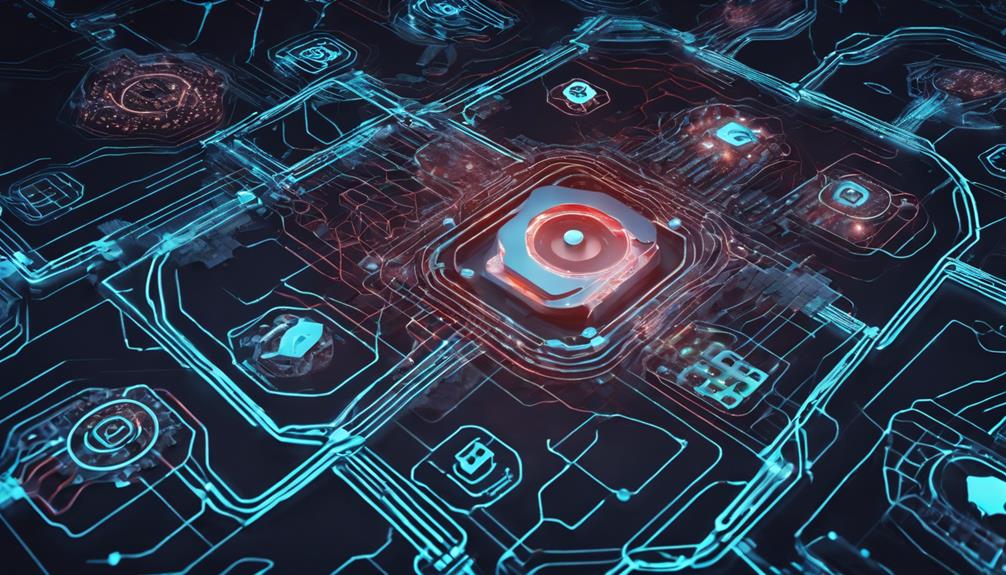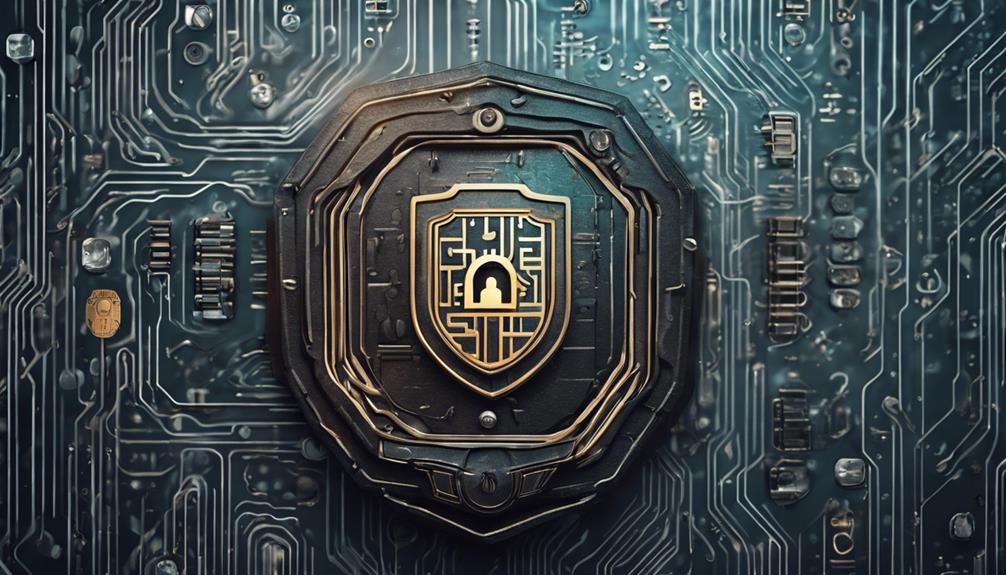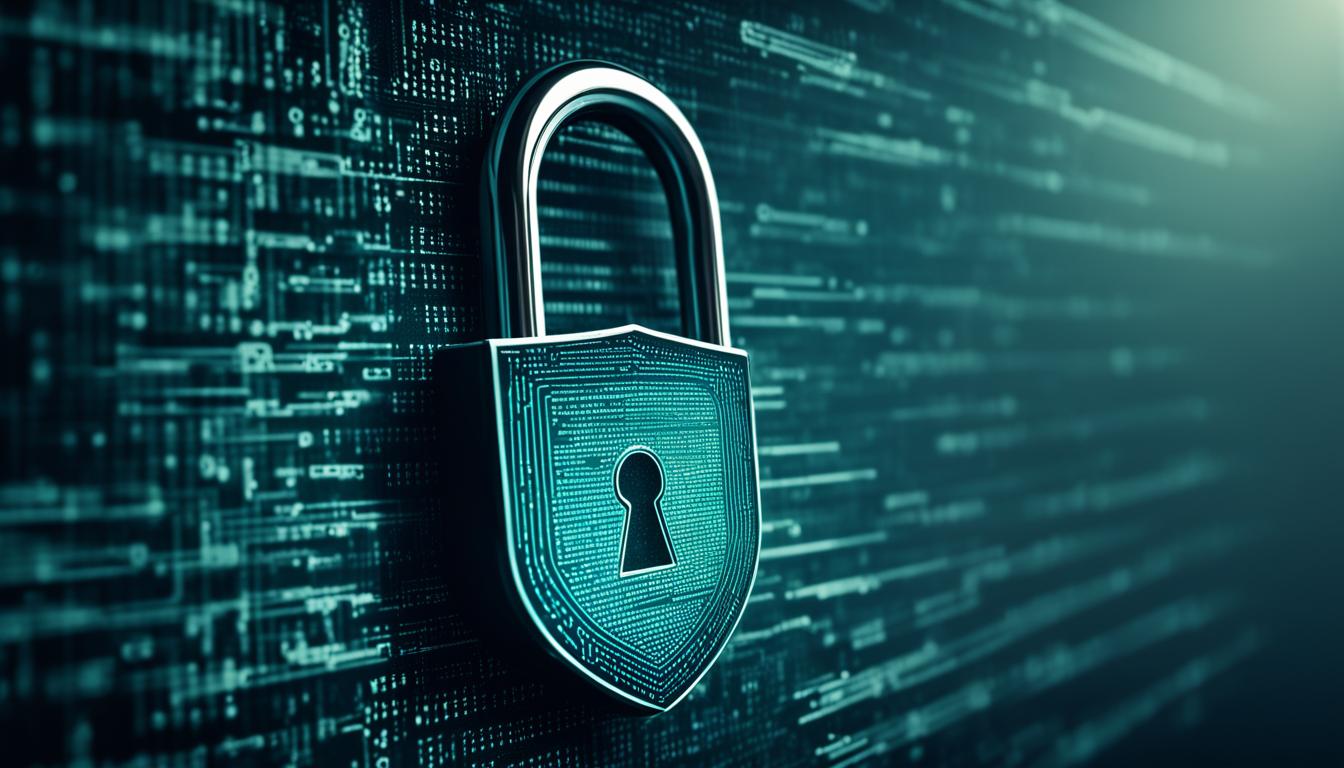Secure configuration is essential for hardening your systems against attacks. By prioritizing proper setup for software and hardware, you considerably reduce vulnerabilities. Implement strong access controls to limit user permissions and guarantee only authorized personnel can access sensitive information. Regularly patch your systems, keeping them up to date to close security gaps. Establish security baselines and conduct continuous monitoring to maintain compliance and detect deviations. Discover more critical practices to bolster your cybersecurity defense.
Key Takeaways
- Implement strong access controls based on user roles to restrict unauthorized access to sensitive information.
- Regularly update software and systems to close vulnerabilities that could be exploited by attackers.
- Establish security baselines and configuration standards for uniformity and reduced risk across all systems.
- Conduct regular audits and monitoring to identify and rectify deviations in configurations and access controls.
- Automate update processes and routine checks to ensure timely application of patches and maintain security posture.

When you think about cybersecurity, secure configuration often takes a back seat to more visible threats, but it’s fundamental for protecting your systems. The way you set up your software and hardware can make a huge difference in your overall security posture. By prioritizing secure configuration, you’re essentially hardening your systems against potential attacks. One of the first steps you should take involves implementing strong access controls. It’s imperative to ensure that only authorized users have the right to access sensitive data and systems. You wouldn’t want just anyone getting into your network, would you? By defining user roles and permissions carefully, you can limit access to only what’s necessary for each individual. Regularly reviewing these access controls is also important, as roles within your organization can change over time.
Another critical aspect of secure configuration is patch management. Keeping your software and systems up to date is a straightforward yet often overlooked task. Vulnerabilities in software can serve as gateways for attackers, so timely updates are essential. You need to establish a routine for checking for patches and updates, and it’s best to automate this process whenever possible. If your systems are running on outdated software, you’re putting yourself at risk. By guaranteeing that your applications and operating systems are current, you create a much stronger defense against cyber threats.
Furthermore, consider implementing security baselines for your configurations. This means defining a standard secure configuration for all systems within your organization. You wouldn’t want to have one system securely configured while another is wide open. By using best practices and guidelines, you can create a uniform approach that minimizes the risk of vulnerabilities. Regular audits of these configurations can help you identify any discrepancies and guarantee compliance with your security policies. Additionally, leveraging analytics tools for tracking payment trends can provide insights that enhance your overall security configuration efforts.
Frequently Asked Questions
What Tools Can Assist in Secure Configuration Management?
To assist in secure configuration management, you can use tools like Ansible for configuration automation and guarantee consistent setups across your systems. Additionally, tools like Chef or Puppet help maintain compliance auditing by regularly checking your configurations against established standards. You’ll find that using these tools not only streamlines your processes but also enhances your overall security posture. With the right tools, you’re better equipped to manage configurations effectively.
How Often Should Systems Be Re-Evaluated for Secure Configuration?
You should re-evaluate your systems for secure configuration at least quarterly. Interestingly, companies that conduct regular system audits reduce their risk of breaches by 30%. To keep your configurations updated, schedule these audits to catch vulnerabilities early. Implementing timely configuration updates not only strengthens your defenses but also ensures compliance with industry standards. By staying proactive, you can better protect your systems against emerging threats and maintain a robust security posture.
What Are the Common Mistakes in Secure Configuration?
You’ll often encounter configuration pitfalls like using default settings, which can leave your systems vulnerable. Ignoring updates and patches is another misconfiguration risk that can expose you to threats. Failing to implement the principle of least privilege lets unnecessary access linger, increasing security risks. Additionally, neglecting to regularly review your configurations can lead to outdated security measures. Stay vigilant and proactive to avoid these common mistakes and strengthen your system’s defenses.
Can Secure Configuration Prevent Insider Threats?
Yes, secure configuration can help prevent insider threats. Think of it as a sturdy fortress with watchful guards. By implementing strict access control, you limit who can enter sensitive areas of your system, reducing the chance of malicious actions from within. Regularly reviewing permissions and monitoring user activities acts as a vigilant eye, ensuring that only trusted individuals can access critical data, protecting your organization from potential insider threats.
How Do I Train Staff on Secure Configuration Practices?
To train your staff on secure configuration practices, start by creating engaging training sessions that emphasize employee awareness. Use real-world examples to highlight potential risks. Implement clear policies and enforce them consistently, ensuring everyone understands their roles. Encourage questions and provide regular updates to keep security top of mind. Reinforce the importance of secure configurations through ongoing assessments and feedback, helping your team stay vigilant against potential threats.
Conclusion
In today’s world, securing your systems isn’t just a choice; it’s a necessity. While a single misconfiguration can leave your data exposed, a well-hardened system stands strong against threats. Imagine the peace of mind that comes with knowing your defenses are robust, contrasting sharply with the chaos of a breach. By prioritizing secure configuration, you’re not just protecting information—you’re safeguarding your reputation and future. So, take action now and fortify your defenses before it’s too late.









